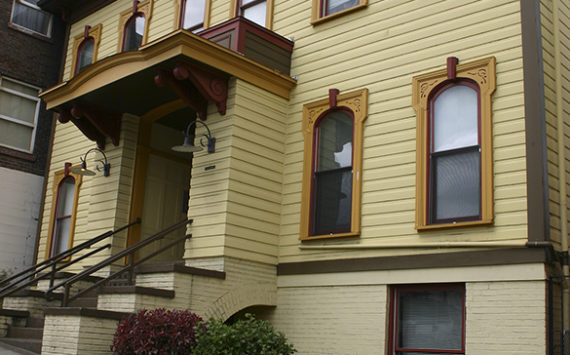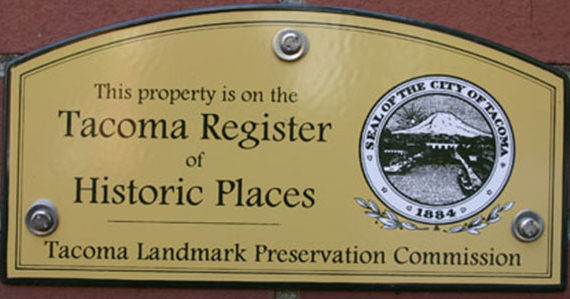The Tacoma City Council might consider ways to broaden the focus of a 10-year multifamily tax abatement program from the downtown core to outlying mixed-use centers in order to spur economic development and revitalization in the citys neighborhoods, according to a discussion during a special mid-afternoon council meeting on Tuesday.
The tax abatement program, which offers a decade-long exemption to new multifamily development and is designed to make housing projects more appealing to investors by freeing up capital and reducing operating costs, was first offered in 1996. During the programs first three years, more than 700 units of housing and investments of more than $33 million were created, according to city records. However, much of that development has been focused on the citys center — a point of discussion Tuesday for council members who represent five districts throughout the city.
This is one of the best tools in our tool box, said Councilmember Kevin Phelps, referring to the program as part of several parts of an effort the city has made to revitalize downtown. The only failure has been in not expanding the program into other areas.
When the tax break was introduced, the city identified 14 mixed-use centers that qualified for the exemption in order to direct population growth to designated residential neighborhoods, protect existing single family neighborhoods from additional multifamily development, encourage transit supportive development, and increase commercial development in the centers. These mixed-use centers include: downtown; James Center/Tacoma Community College; Lincoln Business District; Lower Portland Avenue; Proctor District; Sixth Avenue District; South 56th & South Tacoma Way; South 72nd & Pacific Avenue; South 72nd & Portland Avenue; Stadium District; Tacoma Central Plaza; Tacoma Mall; Upper Tacoma; and the Westgate District.
Yet downtown — which also includes the Thea Foss Waterway — is where most of the development has occurred.
Staff is anxious to see these benefits spread more broadly in the community, said Ryan Petty, Tacomas Economic Development Director.
Still, there was some discussion about whether the tax break was a hand-out for developers — ultimately at a cost to the city. Indeed, the properties presently benefiting from the tax incentive program produce minimal tax revenues for the city.
Some people might ask, Why give developers a tax break when they turn around and sell some condominiums for $1 million? asked Deputy Mayor Connie Ladenburg.
According to Petty, the tax abatement program is tied to a developers decision to fund and build a project from the outset — not the value of a particular housing unit. The key moment for a developer is not the resale point, said Petty. Its the decision whether to build in the first place.
Developer J.J. McCament agreed.
The moment of truth is not the projected sale, she said. You may say you can get $1 million, and you never get it. McCament pointed to the benefit the tax break would have on the city after a particular propertys 10-year abatement lapsed. She added that once an abatement ended, that $1 million condominium would have five times more benefit than a $200,000 condominium on the tax roll.
This is not a subsidy, she said. This is an investment.
Still, Brian Carpenter of the Pierce County Building and Construction Trades Council expressed to the council concern regarding whether the contractors benefiting from these projects are from Tacoma and Pierce County. I would like to see the council investigate that issue, Carpenter said. Theres a lack of information about who the workers are and where they are from.
The city does not have a clause requiring developers who participate in the tax abatement program to hire workers from within Tacoma and Pierce County.
Mayor Bill Baarsma agreed that somehow tying tax-break development to local jobs was important. Shouldnt there be something that contributes to the public good other than density? he asked.
The programs roots trace back to State legislation passed in 1995, which authorized a property tax exemption to encourage the development of additional multifamily housing in urban centers. The law allows other financing sources, such as the Washington State Housing Trust Fund and the Washington State Low-Income Housing Tax Credits, to be used with the program.
The legislation authorized cities with populations of more than 150,000 to provide a property tax exemption for 10 years to those who rehabilitate, convert, or build new housing units in designated urban areas. This legislation supplements the Growth Management Act of 1990 which encouraged redevelopment of urban areas, but did not provide any incentives. The Senate Bill was requested by Tacoma, sponsored by State Senator Lorraine Wojahn and supported by former Tacoma mayor Brian Ebersole and many members of the city council.
Some of the qualifying factors for participation include the following:
Project Size – The project must include at least four housing units within a residential structure or as part of a mixed-use development;
Compliance – Projects must be designed to comply with the citys comprehensive plan, applicable building codes, zoning and many other regulations in effect at the time of application.
Tenant Displacement – A redevelopment project must not displace existing tenants, residential units proposed for rehabilitation must have been unoccupied for at least 12 months prior to the application, and new construction projects must allow 12 months to elapse from time of occupancy of any previous residential structure(s) on the site.
Once the project is granted the tax exemption, construction must be completed within 3 years. The owner enters into a contract with the City of Tacoma, establishing specific guidelines for completion and acceptance of the project. If the owner sells the property after the tax exemption has been granted, the exemption stays with the property and is transferred to the new owner.
Councilmember Rick Talbert expressed support for the program. Its success is reason enough to leave it alone or expand it, he said.
Councilmember Phelps commented that by focusing on expanding the program into other areas of the city, growth could could be more easily controlled and directed. As long as the Growth Management Act tells us there is a need to accept growth, Phelps said, this program will allow us to say where that growth will go.







